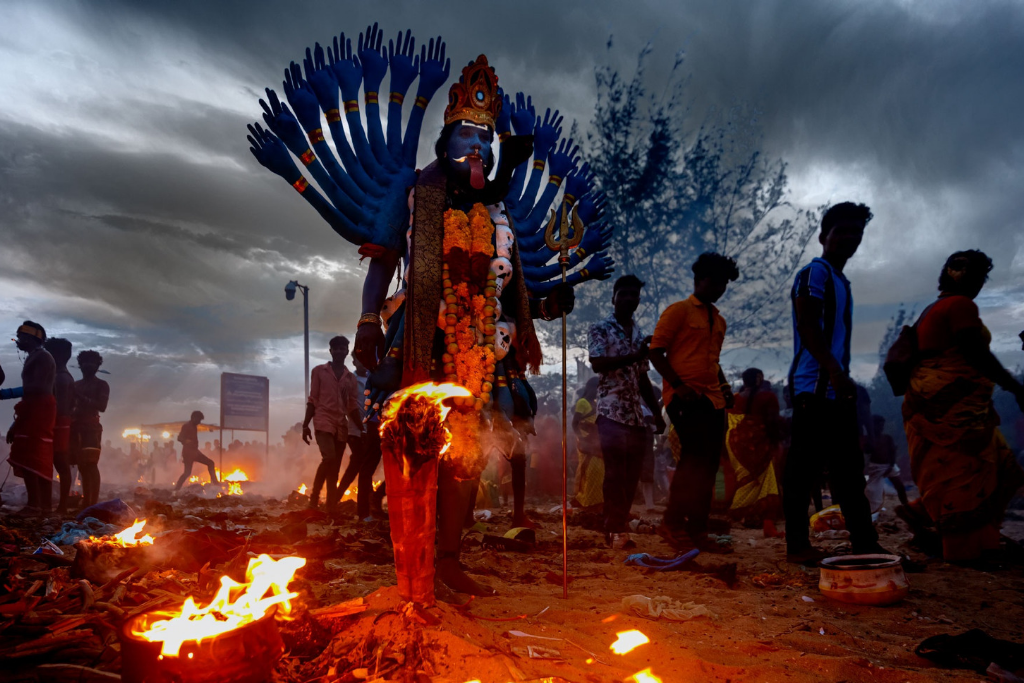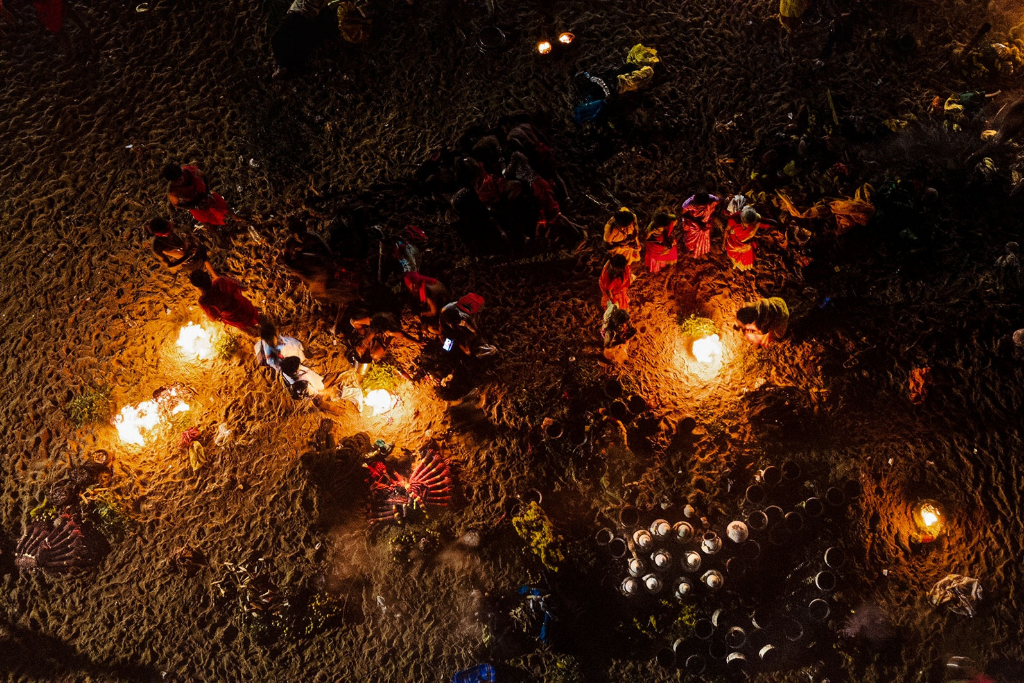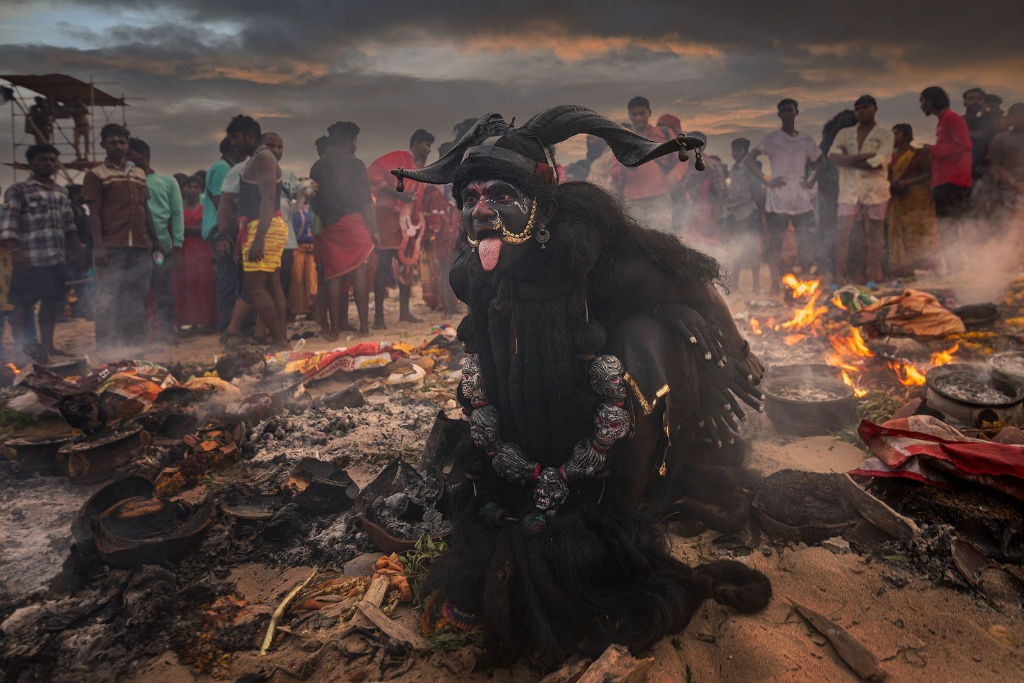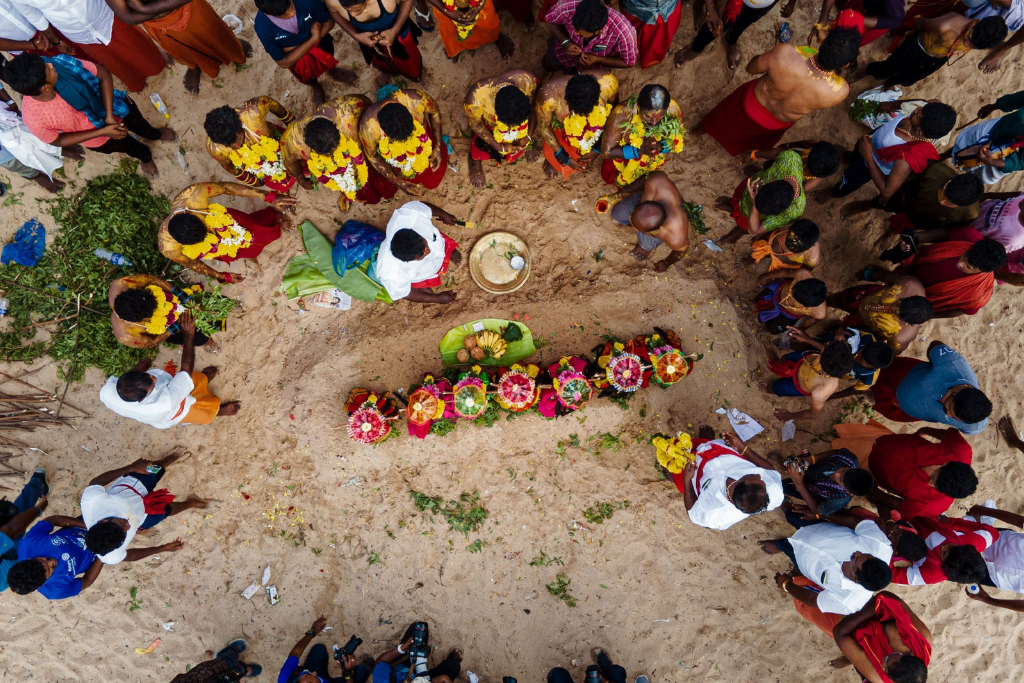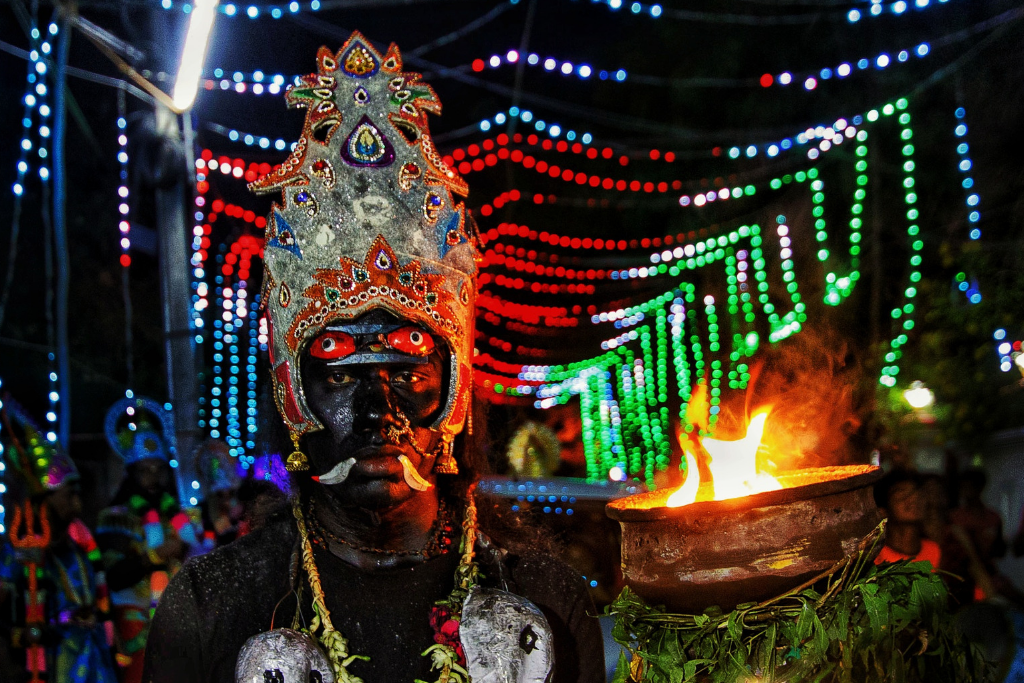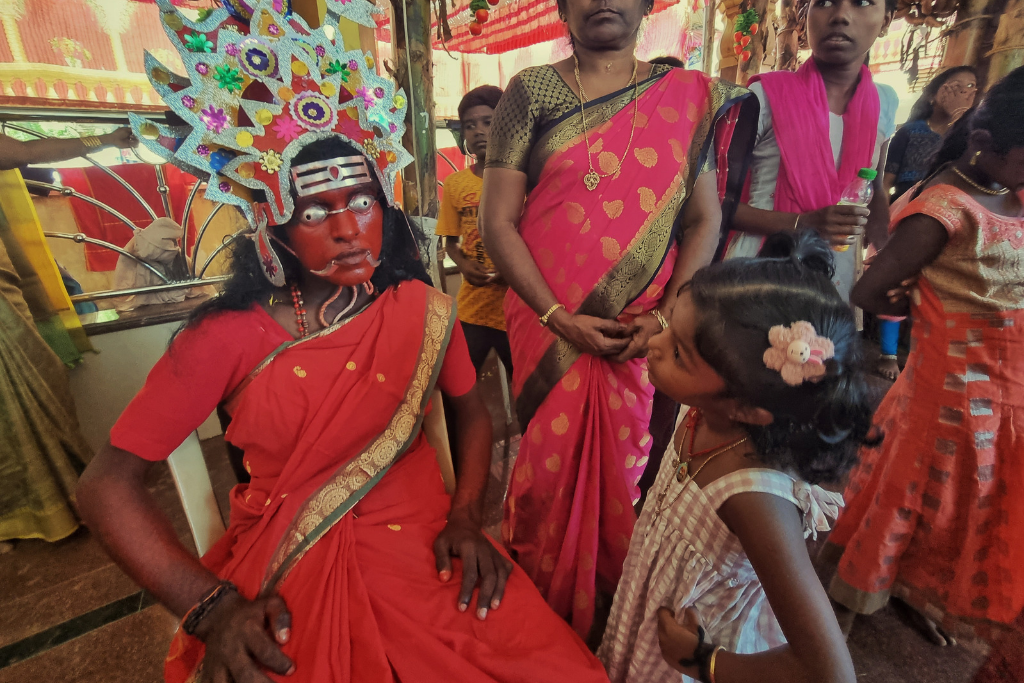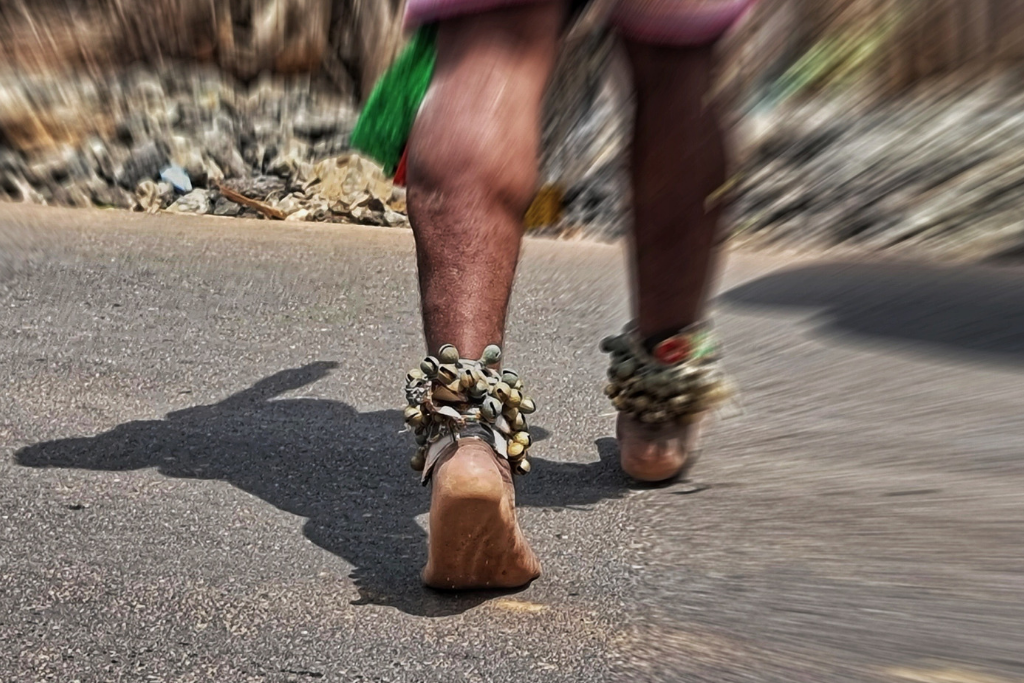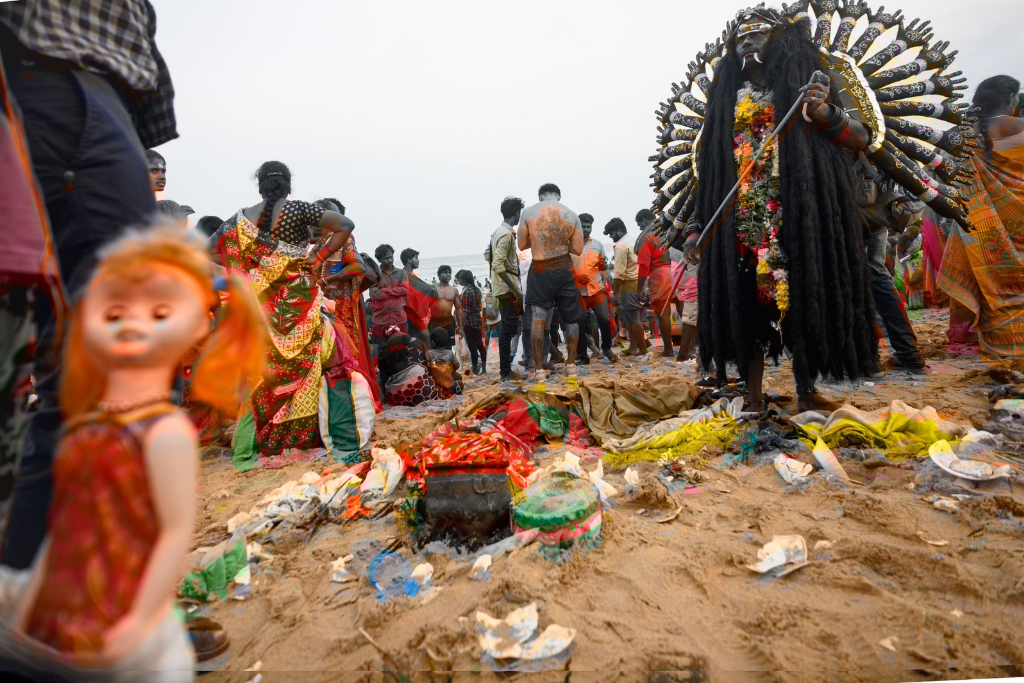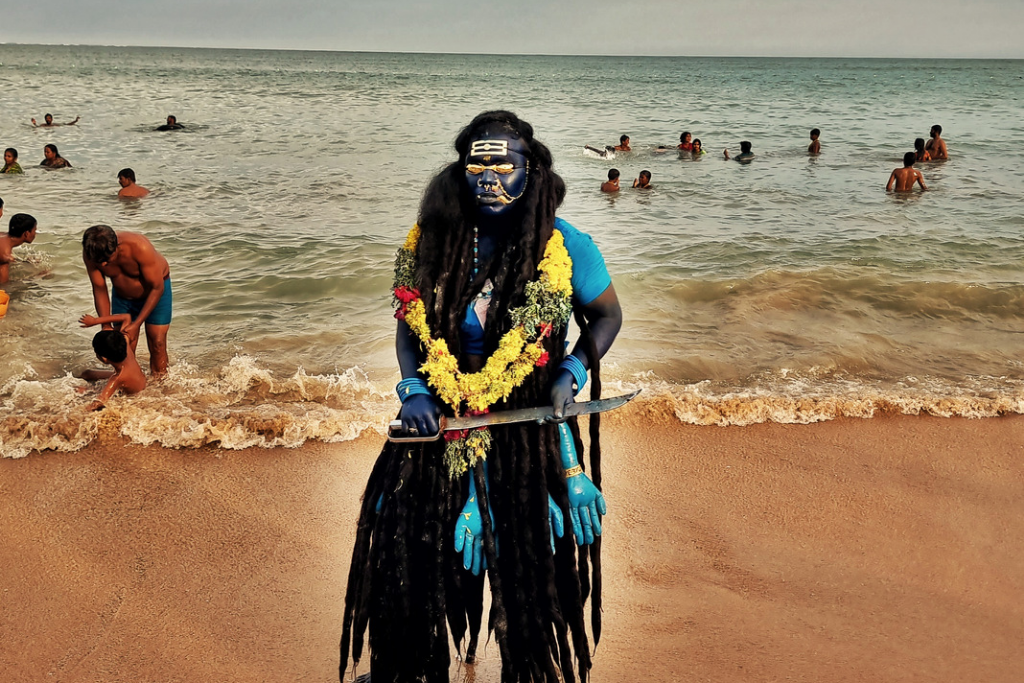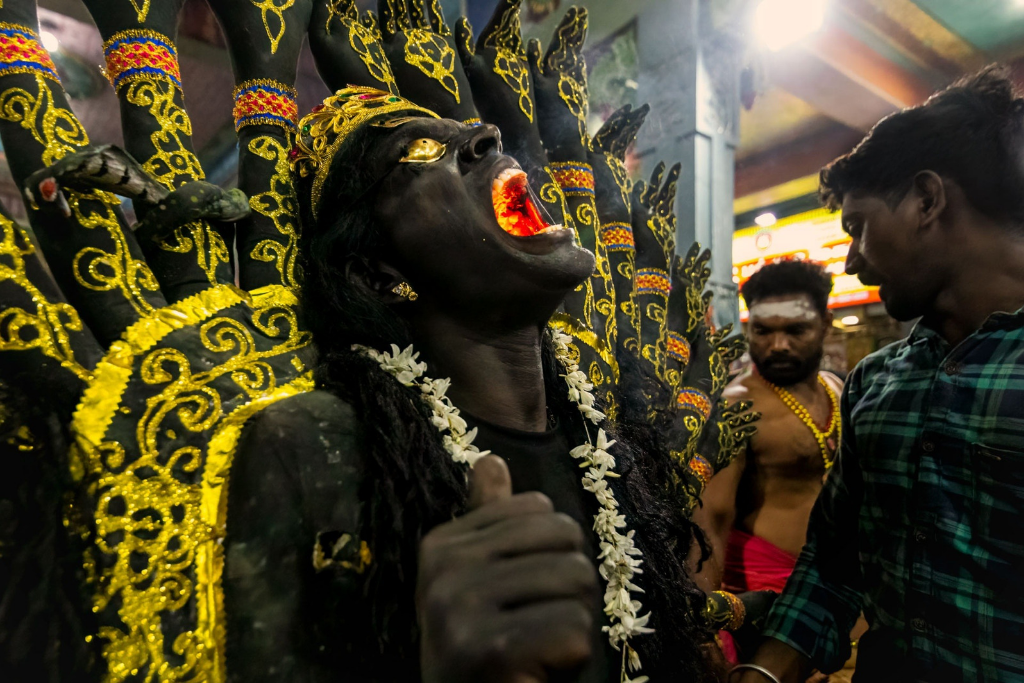
Kulasai Dasara comes alive with devotion and delight
Dussehra takes a riveting form at Kulasekharapatnam village of Tamil Nadu, where thousands of devotees, wearing body paint and costumes to look like different deities, gather at the Sri Mutharamman Temple to celebrate Kulasai Dasara.
The small village of Kulasekharapatnam, situated near Thiruchendur in Thoothukudi district of Tamil Nadu, comes alive every year during the Navratri festival observed in autumn. On the day of Dussehra, the 300-year-old Sri Mutharamman Temple, also known as Kulasai Mutharamman Temple, reverberates with the spirit of the cult rural celebration known as Kulasai Dasara. The celebration begins with the commencement of Navaratri and lasts for 10 days, culminating on Dussehra, the day when the demon known as Magisasuran is slain.
The festival is associated with a folklore about how the local residents here were once being tortured by a cruel demon called Magisasuran. Helpless against his might, they invoked the local goddess, Mutharamman, to save them from the demon.
Also Read: Kumhartuli artisans in full swing ahead of Durgo Pujo
A baby girl with divine powers was soon born in the village, and was named Lalithambigai. The infant grew into an adult in just nine days, known as the Navaratri. With a burning desire to banish evil from the earth, Lalithambigai was transformed into the powerful form of Annai Parasakthi Lalithambigai on the 10th day.
Annai Parasakthi Lalithambigai attacked Magisasuran with great force and destroyed him on the 10th day. This represents the victory of good over evil marked by the festival of Dasara, also known as Vijayadashami.
Also Read: Handcrafted Baluchari sarees see festive resurgence
The devotees participating in the festival observe austerities like fasting for 6-7 days prior to the main occasion. The festival starts at the beginning of Navratri with the raising of a flag at the temple, which is decorated with flowers and lights. On the day of Kulasai Dasara, thousands of people from near and far visit the Sri Mutharamman Temple to offer their prayers. They wear elaborate costumes and makeup to symbolise the goddess and other deities.
It’s a mesmerising sight for tourists and photographers who congregate here to experience the Dussehra festivities. The devotees paint themselves in various hues, from black and white to blue and yellow, to depict various gods and goddesses.
The Dasara festivities are marked by frenzied folk music and dance performances and several elaborate rituals conducted by the devotees.
Also Read: Doll makers of Bengal face bleak prospects
The ambience is filled with sounds of drum beats and clouds of smoke billowing from the fire pots carried by them. It’s a spellbinding experience.
The lead image at the top shows a devotee dressed as a deity.
Photos by Madhumita Chatterjee. Text by Village Square
